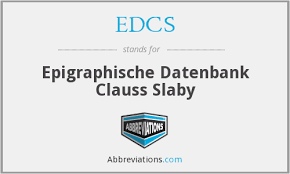CO15 Epitafio de Festo
Referencia CIL II2/7, 389 | Descripción | Letra | Localización | Cronología | Edición epigráfica | Traducción | Aparato crítico | Comentario | Tipo de verso | Texto dividido en versos y signos métricos | Imágenes | Bibliografía | Enlace a BBDD | Nombre de autor/autores |
CO15 Epitafio de Festo
Descripción
- Idno filename 22/01/0079
- Tipo de inscripción: Sepulcralis
- Descripción del material: Color gris oscuro casi negro, con vetas blancas.
- Descripción del estado de conservación: Roto por la izquierda; se encuentra encastrado en una pared.
- Medidas alto/ancho/fondo (cm): 26.5/116/4.5
-
Campo epigráfico:
- Disposición del texto en el soporte: "Ordinatio" buena. El soporte contiene dos textos en columnas distintas; de la izquierda sólo se conservan, como máximo, 12 letras. Interpunciones triangulares.
- Conservada
Letra
- Tipo de letras:Libraria
- Medidas de las letras:3,5/4 cm
Localización
- Lugar de hallazgo: Hallado en Córdoba en 1970, en el restaurante “El caballo rojo”.
- Geolocalizacion
- Lugar de conservación: En uno de los patios del restaurante "El caballo rojo".
- Ubicación con NOMENCLATURA MODERNA con ESCALA MACRO España / Córdoba
- Ubicación con NOMENCLATURA ANTIGUA con ESCALA MACRO Hispania / Baetica / Cordubensis / Corduba
Cronología
- Datación de la inscripción: Entre el año 170 y el año 230
- Justificación de la datación: Fechada entre finales del s. II e inicios del s. III por la forma de las letras y la monoptongación fonética (no gráfica) del diptongo AE en una E breve.
Tipo de verso
- Tipo de verso: Dactílico (hexámetro)
- Corresp. verso/línea: Si
- Distinc. prosa/verso: No
Edición epigráfica
a) [‑ ‑ ‑n]overat unum
[‑ ‑ ‑]t ▴ et ▴ pia nutrix
[‑ ‑ ‑c]oepit ▴ et ▴ unus ·▴
[‑ ‑ ‑]a ▴ fiant
5 [‑ ‑ ‑]ṃater ▴ habebit
b) sum genere Macedon ▴ set in arvis Baeticae partus
quintus ▴ post ▴ dec˹i˺mum ▴ revolutus ▴ fugerat annus
et ▴ iam ·▴ iamque viro ▴ toga se sociare parabat
deficiunt fata totus labor excidit hora
10 hic ego sum positus festus ▴ de nomine ▴ Festi
Texto dividido en versos y signos métricos
a)[ln|ln|ln|ln|n]overat unum.
[ln|ln|ln|l]t et pia nutrix.
[ln|ln|ln|ln|-]coepit, et unus.
[ln|ln|ln|ln|lk]a fiant.
5 [ln|ln|ln|ln|]mater habebit.
b) Sum genere Macedon, set in arvis Baeticae partus. lww|w/ww|l/ww|ll|lwl|lx
quintus post decimum revolutus fugerat annus, ll|l/ww|l/ww|ll|lww|lx
et iam iamque viro toga se sociare parabat. ll|lww|l/ww|l/ww|lww|lx
deficiunt fata, totus labor excidit hora. lww|l/l|w/l|l/ww|lww|lx
10 hic ego sum positus, festus de nomine Festi. lww|l/ww|l/l|l/l|lww|lx
Traducción
a) [---] Sólo a él conocía [---] también su piadosa nodriza [---] empezó y sólo él [---] ocurran [---] tendrá su madre. b) Soy macedonio de origen, aunque nacido en los campos de la Bética. Mi decimoquinto año, pasado ya, se había marchado, y la toga estaba a punto de asociarse a mí en edad viril. Me abandonan los hados; todo el esfuerzo se desvanece en un instante. Aquí estoy enterrado yo, festivo por mi nombre Festo.
Bibliografía
Mellado – Vila 1972, 321–324, cum im. phot. (AE 1972, 276 et 277); Stylow, II2/7, 389; Fernández Martínez – Carande, CLEB, CO3, cum im. phot. pluribus; Cugusi 2012, 27. – Cf. Hernández Pérez 2001a, 8–10. 56. 57. 191. adn. 247–509; Gómez Pallarès 2007, 177-178 cum im. phot.; Medina 2015, 88.
Aparato crítico
a) suppl. Mellado – Vila. – 2 [ ]at Stylow. – 5 [ ]ater Mellado – Vila.
Comentario
Two funerary carmina dedicated to the same individual and composed together; in a), the wet-nurse and probably the parents bemoan the death of the young Festus, while in b) it is the deceased himself who speaks. Text b) consists of five dactylic hexameters, and in a) all that remains is the end of another five. In text b), l. 1 presents lengthening of the final vowel of genere in the 3rd element and shortening of the final syllable of Baeticae owing to the early monophthongisation of the diphthong ae into an open e (cf. Mariner 1952, pp. 10-17); in addition, devoicing of the final -d in set. L. 4 shows lengthening in arsis of the final vowel of fata in the 51th element. In b) l. 5 the wordplay included in this verse, which relates the name of the deceased with the rest that he enjoys, can be compared to other epigraphic examples cf. Gómez Pallarès 2002, T9 (= MNAT.P, no. 1, RIT 447, with prints LXXXIX,3), l. 0: Secundinius felicissimus ego set nomine tantum; et CLE 686.16 floride, non aliter, venerandus Floride perge, 1862 Felicem Aufidium felicem semper deus / faciat, 1869 Felix vocatus felix vivit cum suis, quoted by Mellado-Vila 1972. Cf. in addition to Sblendorio Cugusi 1980 pp. 257-281.
Nombre de autor/autores
- Nombre de autor/autores:R. Carande Herrero, C. Fernández Martínez
- Última modificación2024-01-31 16:52:11
- Fecha de autopsia:2001
Puedes descargar esta






